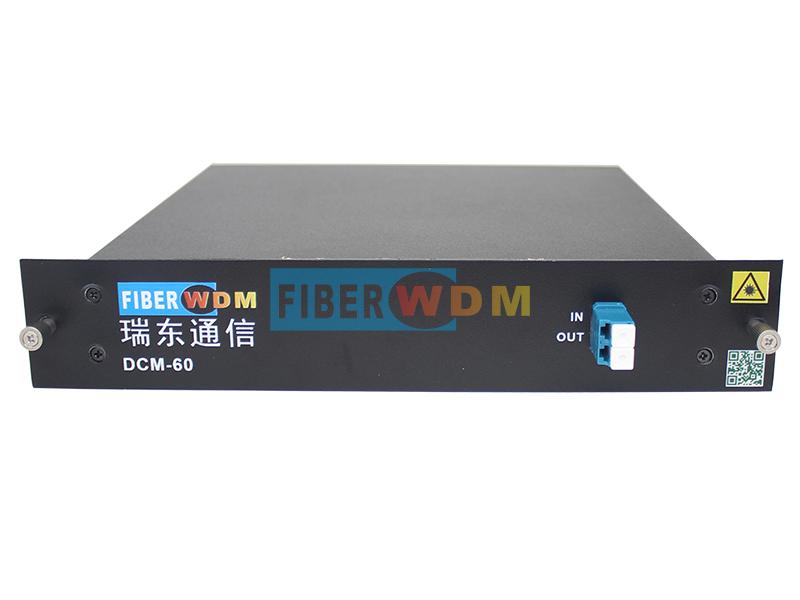
In the field of optical fiber communication, the dispersion compensation module (DCM) (also known as the dispersion compensation unit, DCU) is used to compensate for the dispersion, for example, to compensate for the dispersion in a long transmission fiber. Usually, this module provides a certain amount of dispersion, but there are also modules with tunable dispersion. Inserting the module into the fiber optic link is very simple, because there are optical connectors at the input and output ends. Fiber amplifiers can be used to compensate for insertion loss. For example, erbium-doped fiber amplifiers can be used in 1500nm communication systems. The dispersion compensation module is usually placed between two amplifiers.
The dispersion compensation module can be obtained using the following techniques:
1. A commonly used simple method is to use a long optical fiber, for example, a dispersion-shifted optical fiber, and wind it on a spool with a diameter of 100-200mm. The fiber used can be optimized to compensate for the dispersion in a 100km-long transmission fiber, and the insertion loss is only a few decibels.
2. Another more compact structure with low doping loss is the use of chirped fiber Bragg gratings. Using relatively long fiber gratings can compensate for large dispersion. By changing the device temperature, dispersion tuning can be performed.
3. In the wavelength division multiplexing system, some imaging phase arrays are used.
Some important properties of dispersion compensation:
1. The most important thing is the amount of dispersion that can be provided, which depends on the length of the transmission fiber to be compensated and the type of transmission fiber. For example, dispersion-shifted transmission fibers require less dispersion compensation.
2. The dispersion slope will strongly limit the available bandwidth, which is especially important in wavelength division multiplexing systems. Depending on the type of transmission fiber, different dispersion slopes need to be used. The relatively high dispersion slope makes fiber design more difficult.
3. In some cases, it is desirable that the dispersion is tunable.
4. Insertion loss will not only be caused by absorption and scattering in the optical fiber, but also the bonding points and connectors will contribute to it. This loss needs to be as small as possible, because they require high amplifier gain and introduce additional noise.
5. In some cases, optical nonlinear effects will also affect. The strong dispersion fiber can minimize its impact, and a very short fiber is sufficient.
6. In practical applications, compact structure is very important. The compensation fiber can be wound tightly, but it will also be limited by bending loss.
When the single-channel data rate is very high, the polarization mode dispersion also needs to be compensated. This is more complicated because it requires corresponding control of the polarization state of the signal light and a reasonable adjustment of the time delay.